|
Your client has heard your pitch or read your proposal. You're confident in your estimate, and the players involved. The client hasn't green-lit your proposal, and the scheduled start date is looming. Every client or design team question is a red-hot priority to get answered. Whatever else you've got to do will have to wait. As days creep by there's still no contract award. What do you do? Estimators suffer a tendency to think like...estimators. Specifically they tend to focus on measuring and pricing items rather than considering what's been presented to the client. Adding to this problem, Estimators might be accustomed to competing against their peers in the market. This implies that a general level of knowledge and skill is present among competing estimators. No such criteria exists among clients. Clients may not understand industry practices, terminology, and jargon. Well I'm the low bidder, surely that's enough for them! Consider the case of a one-time builder like a standalone retail building. The client may have little to no personal experience with the construction industry. However they have doubtlessly read about State or Federal projects that became boondoggles through mismanagement and greed. It's a grave concern to an individual that cost over-runs could put them under before they can even start. The tighter their budget, the less likely they are to have contingency funds to pay for change orders. This is a serious commitment, similar to hiring a surgeon. Clients need the project to be successful on their terms. That means defining and addressing whatever they're most concerned about. The key to closing is knowing which door is open. Time Critical
Some clients will be especially sensitive to deadline delays. Retail establishments that aren't open in time for major shopping seasons can face financial ruin as a result. Office remodels might entail renting a temporary space, effectively doubling or tripling their rent during construction. Clients like this would be looking for a firm schedule commitment in the bids they receive. Competence with Complexity Other Clients are primarily concerned with the functional outcome of complex systems. Factories, or manufacturing facilities might require extensive coordination between; Architects, Engineers, specialty contractors, equipment purveyors, and the build team. Clients in this case might need a General Contractor who can take the many demands of all these disciplines and direct the resources towards a successful outcome. "By the book" bidding practices won't carry far with these clients. Problem solving, conflict resolution, and strong leadership need to be promoted to attract these clients attention. Perfect Craftsmanship Certain clients want perfection in terms of craftsmanship, and materials. These clients are willing to hire strong design teams with well-defined construction documents. Top-tier subcontractors deliver the sort of performance these clients are looking for. These clients want to know you've vetted every tradesman you'll have working on their project. The best indicator of future success is past performance. Proving your abilities with a portfolio of similar work is a good approach. Appearing "cheap" may work against a bidder. Bid Packet Perfection Municipal, public, and institutional clients often have regulations and policies they must adhere to. These regulations may give preference to specific groups like Women Owned Business, or Minority Owned Businesses. Depending on the policies, these clients might have a percentage of participation for these groups in terms of contract value. Proving the percentages with the correct paperwork, on complex jobs often leads to minor discrepancies. Winning and losing these bids can be as simple as getting the paper work correct. I've encountered urban city projects that were re-bid because there wasn't a single GC who had submitted an error-free proposal the first time! These clients can't accept an incomplete/imperfect proposal so it's very important to prioritize accordingly. Corral the Committee Sometimes the client is a committee tasked with reviewing the proposals and awarding the contract. In the best of cases, this is a smooth democratic process. More often, it's an exercise in scope creep. Questions regarding the project quickly move to the hypothetical. Before long, you're attempting to give accurate schedule, budget, and permitting feedback on something imagined within the conversation! Committees lacking firm leadership are long on good intentions and short on decision-making. It's critical to understand that these clients won't make decisions any faster once the project is underway. Projects rarely get schedule extensions so unanswered questions can pose significant risk. Kindly rise to the situation and fill that leadership gap. Diplomatic but firm direction keeps the committee on task and gets everyone where they need to be. Done well, they'll be satisfied that your firm took their direction properly. All inclusive Clients with Design-Build projects have an entirely different perspective than others. Lacking an Architect's representation, these clients are looking for a turn-key proposal which effectively delivers them their vision of the project within the schedule and budget submitted. These clients generally perceive change orders to be impossible since "you designed it". Whatever schematic design documents were provided will be expected in your proposal regardless of how vague, misleading, or apparently irrelevant. A history of previous successes might be significant with these clients as well. Brass tacks Finally, there's the budget-conscious client. These clients occur at every tier and there's just nothing for it but to be low bidder. Clients with high expectations and low funds often arrive at bid day to find they've blown their budget. Estimators are often too discreet to ask the client how far the budget is off. Lacking this information, they're unable to determine how much needs to be cut. This leads to playing guessing games with breakouts, alternates, and value engineering. Estimating is NOT GUESSING. Throwing out whatever might save money is a foolhardy practice that consumes resources, generates risk, and lowers profitability. It's a terrible practice that desperately needs to stop. Every number you provide can be used against you later. Many GC's have unit-priced their way into an unprofitable project by "helping" an underfunded client. Charitable donations should at least be tax-deductible! It may help to be reminded that the Architect typically knows the clients budget at the earliest design stages. They also know the clients priorities for the project. Some features are naturally more critical to the client than others. When it comes to big budget gaps, the Architect should be involved. Working together with the Architect reduces the odds that they'll reject your suggestions later. "Your number was competitive, I'm still deciding which way to go." It's absolutely imperative that estimators recognize the connection between time for consideration and pressure to act. The deadlines for bidding are a source of pressure for all bidders. Get it done by this day, no excuses, no exceptions. Clients who marinate on the proposals for longer than you had to bid aren't playing fair. It can be extremely difficult to get the clients attention after the bid. Stay after it because more time translates to less pressure. Dithering clients might be approached by a competitor who captures an opportunity to revise their proposal to meet some previously undisclosed demand. Now that competitor is "working with" the client. Potentially generating inertia away from the actual outcome of the bid via trust-building rapport. Next week read part 2! Thanks Anton for your valuable insight into construction estimating © Anton Takken 2015 all rights reserved For more articles like this visit estimators playbook
0 Comments
 forgotten construction equipment - see footnote forgotten construction equipment - see footnote Our construction projects made extensive use of steel forms. These were joined together by clips and wedges. When stripping the forms the carpenters and form-workers used to knock out the wedges and the clip and wedge would fall to the ground where they were often left – eventually becoming lost, buried in the dirt or swept out with the trash. Now these clips and wedges only cost about fifty cents. None the less I made it a habit as a young site engineer, then as a construction manager and even when I was the general manager of a construction division to pick up these clips and wedges together with other small items of formwork equipment. Now don’t get me wrong, I didn’t actively spend time searching for these items, but I was observant enough that as I went about my normal business of inspecting progress, safety, quality and attending to the day to day issues on the project I picked these items up in passing and handed them to the supervisor, foreman or carpenter in that area. I even picked up nails and screws lying in the dirt, not because they were of real value but because they could have punctured a tyre on one of our construction vehicles resulting in lost time and additional costs. Now I was reminded of this habit when a project manager invited me to visit his construction project. Ten years ago he was a young site engineer, newly qualified and learning the ropes on one of my projects. He remarked that he still remembers my actions of picking up the small items of formwork equipment and involuntarily repeats the habit on his project. The impact of our good examples Over the years I probably picked up a couple of thousand dollars of equipment, which to some might not seem worth the effort of getting their hands dirty. But it’s the indirect impacts of my action that made the real contribution.
In my years in construction it never ceased to amaze me how observant construction workers were. It was noticed when the Construction Manager arrived late in the mornings, when they took an extended lunch break or left early in the afternoon. But they noticed other bad habits as well. Once a worker was caught stealing items from the project and his defense at the disciplinary hearing was that when the project had scrap metal (waste reinforcing bars and other items) the project manager instructed him to load it onto the truck and take it to the scrap yard to sell. The scrap metal was paid for in cash which the worker handed to the project manager who then put the money in his pocket. Now the project manager later paid the money into the company’s system but the worker didn’t know that, and automatically presumed the manager had pocketed the money for their personal use. They perceived that the project manager was stealing and it was therefore acceptable practice to also steal. So we see that just as good habits have a multiplier effect so to can bad habits also multiply. The project manager who has an extended lunch break could cause all the workers on the project to have an extended lunch break. But it’s not just about the habits of the project manager it also comes down in ensuring that everyone in the team keeps to the same rules. Allowing one worker to leave the job site early today, inevitably leads to ten workers leaving early tomorrow, more the next day until everyone leaves early. When everyone leaves five minutes early and nothing is said, then the five minutes becomes ten minutes and ten minutes becomes fifteen. Everyone leaving fifteen minutes early on a large project could cost hundreds of dollars every day. Safety is one area where some managers set a poor example. The CEO of one company frequently visited projects and didn’t wear the correct personal protective equipment – except when he visited my projects. Even if he was only on the project for five minutes I insisted he wore the correct safety footwear, hat and glasses. Not only was it for his safety but those were the rules on my project and everyone was expected to follow suit. But setting the right example meant we had no problems with our team not wearing the correct personal protective equipment. Leading by example not only means that managers should be seen to be obeying the rules and doing the right thing, but it also means that they shouldn’t walk by others who aren’t doing the right thing. Walking past poor quality work, an unsafe act, unproductive workers or someone misusing equipment is perceived by others that these acts are condoned and accepted. Conclusion Next time you arrive late at work, or neglect to obey the safety rules on your project consider who is watching and the impact your behaviour will have on the project team. It’s no use lecturing workers on poor time keeping, being intoxicated at the work place, of unsafe practices and poor quality work if management ignores the rules and condones some workers poor work. Even today if I see litter lying in the street outside my house, or that’s in front of me in the park, I pick it up and throw it in the trash bin. If I don’t do it, who will? Again I don’t actively go and search it out, but if it’s there at my feet I pick it up. It doesn’t cost me anything and it’s better than whining about the litter in the neighbourhood. Oh, and just maybe I’m setting an example for others in the neighbourhood to follow! Are you setting the right example? What are the workers on your project saying about you? Footnote – The photograph above was taken on a project site many months after the contractor had demobilised. Obviously the items of equipment had been covered by dirt and been forgotten by the contractor. But even if the contractor had discovered the equipment when they demobilised from the project the items had probably corroded and possibly have risked been damaged by vehicles. To read more about the author’s books and find out where you can purchase them visit the pages on this website by clicking the links below: 'Successful Construction Project Management: The Practical Guide' 'Building a Successful Construction Company: The Practical Guide' 'Construction Claims: A Short Guide for Contractors' © 2016 This article is not to be reproduced for commercial purposes without written permission from the author. Why is productivity poor in constructionConstruction is notorious for poor productivity. What contributes to this problem and how can we improve construction productivity on our projects? Imagine if we could improve our labor productivity by just 5%. Not difficult one would imagine. If labor makes up 40% of a project’s cost then effectively you could save 2% on your project costs. 2% additional profit! Doesn’t sound like much? But if your profit margin was 10% then a 5% improvement in productivity could mean we now make 12% profit. Well that means we have increased our profits by 20%, and directors and shareholders would be more than happy with this. But improved labor productivity could also result in better equipment productivity, shorter construction times and reduced overheads leading to even more profits. We often blame workers for the low productivity, which is sometimes the case. However, management can also play a significant role in improved construction productivity. #constructionmanagement #productivityinconstruction #constructionprofessionals How can you improve construction productivity?Here are some suggestions to improve construction productivity:
Improving construction productivity is in your handsDon’t be too quick to blame your workers for poor productivity. First look at management and ensure they are managing the project effectively and providing workers with the correct tools and skills. Even slight improvements in productivity can yield dramatic results in production, leading to improved quality, safety and profits. Managers need to be continually looking for ways to improve productivity, always checking there are no bottlenecks or roadblocks impacting productivity. In Another 10 ways to improve productivity we look at more ways you can improve productivity on your construction projects. #construction productivity #constructionmanagementtips #constructionprojectmanagement This article was first published on the ClockShark website. Please share this post Do you want to learn how to manage construction projects successfully"A practical guide based on great experience of a real professional. If just only part of recommendations is followed by contractors the ratio of successful projects would grow dramatically." (Reader on Amazon) To read more about the author’s books and find out where you can purchase them visit the pages on this website by clicking the links below:
'Successful Construction Project Management: The Practical Guide' 'Building a Successful Construction Company: The Practical Guide' 'Construction Claims: A Short Guide for Contractors' 'Construction Book reviews' To read more about the author visit the page 'Paul Netscher' Want to contact Paul Netscher please enter your details on 'Contacts' Find out how Paul Netscher can help you Order your books from Amazon Order your books from Amazon UK © 2016 This article is not to be reproduced for commercial purposes without written permission from the author. "Does this look like a professional contractor that you can trust to deliver your construction project on time with good quality?" What does your construction project really look like? Do you see what your customers see?When you arrive at a hotel what do you think when you see paint flaking from the building and weeds growing in the sidewalk? Are you tempted to cancel your booking and walk away? You enter the lobby and the décor is old and faded – hey the beds could be comfy and the food good but you surely doubt the wisdom of checking in to this hotel and you might not stay long enough to sample either the beds or the food? And the more you see faults the more you start looking for faults. That check-in clerk better be quick and efficient or you’ll be adding that to your list of complaints. So too with our construction projects, customers and potential customers can be turned away by projects that look disorganized and appear unprofessional. When your client walks onto your project site what have they seen, what has offended them and are they already looking for other faults. Why construction companies should be concerned about their reputation Lets take a look at your construction project and see how it stacks up. Will your customers and potential future clients be impressed when they look at your construction project? Will they see a well organised and managed construction project? Is your construction project a good advertisement for you and your construction company? "This contractor says respect our neighbours. How is your project impacting your neighbours? Would they use your company on their project or recommend you to their friends?" Look at your construction project from the outsideWhen last did you take a good look at your construction project? Are you so rushed every day that you walk past things without noticing when they don’t look right? How do your customers, and potential customers, view your project? Yes, it’s important to finish the project on time and provide good service – but, this is only part of what’s required. Understanding what impacts your construction company’s reputation So let’s take a half hour this morning and view our project from the outside to the inside. Switch the phone off and really take the time to look. You may be surprised at what you’ve walked past every day without noticing! Starting outside the project site: 1. Is there a sign board advertising your company? Companies pay big money to advertise on a billboard so we shouldn’t waste this opportunity of almost free advertising! What does the sign board say about your company? Maybe it’s a sign you take from project to project so it’s showing its age, got a bit dented, started to rust or maybe the paint has started to peel? Is it straight or put in crooked or maybe bent over by the wind – if so customers may wonder about the standard of your construction work? Is the company name clear, will people know what the company does, and are the contact details easily read from a distance? Why let good advertising be wasted? Why let bad advertising spoil the company image? 2. How is your project impacting the neighbors? Are your construction vehicles blocking the road or parked on neighboring sidewalks? Can pedestrians safely walk past your project? Is debris from your project spilling onto the road causing a traffic hazard? Remember a neighbor could be a future customer – but not if your workers annoy them. Your work, vehicles and workers (or your subcontractors) shouldn’t damage the roads or sidewalks because it will cost you money to repair. While you’re looking outside the project site look for litter – often workers eat their lunch in their vehicles and discard their fast-food wrappers next to where they’re eating. Some tradespeople like a beer after work and then throw the empty bottles over the neighbor fence or leave them in neighboring gardens – certainly not good for neighborly relations. Irate neighbor may write letters to the local press which isn’t good for the company image. They may even contact your customer directly – which will certainly annoy your customer. Customers don’t like bad press and they certainly don’t like dealing with members of the public that their contractors have offended. 3. What’s the appearance of the company trucks? Are they a good advertisement for the company, or are they dirty, leaking oil, bashed and looking old? Customers like employing construction companies that have new and reliable equipment – equipment that won’t break down and slow their project down. The Alarming Truth about Using Old Construction Equipment But more importantly is your crew looking after company equipment? Dirty equipment may be a sign that the item isn’t being maintained, which could lead to problems later. 4. Is there neat and secure barricading around the project? Can anyone enter the construction site and possibly get injured or perhaps steal stuff. Is the barricading in a good state, or has it been damaged by construction works or inclement weather? Fencing and barricading in disrepair gives a bad first impression of your construction project and it can be dangerous. Construction Hoardings, Barricades and Fences Well we’ve had a good look at the construction project from the outside so let’s go in. "What is the state of your construction equipment?" Check inside your construction project5. What do the site offices look like? Are they set level and in straight lines? Are they in good repair, with no broken doors or windows? How do you access the offices – are there proper stairs or only some bricks or pieces of timber piled on top of each other which are a safety hazard. Is their graffiti on the outside or are they neatly painted? Again shoddy offices give a bad impression of the company and customers may think that it’s a reflection on the quality of the work your company produces. Look inside the offices – are they organized, with enough space for everyone and all the documents? Your team needs to be comfortable in their offices – not too comfortable because some need to spend time at the work front – but certainly comfortable enough so they can do their work properly. While you’re looking – consider security – security of documents and confidential information, security of equipment (a stolen computer not only costs money to replace, but more critical are the lost documents on it, and the time without the computer), and in some areas even consider the security of your personnel. 6. What is your crew wearing – do they look a rag-tag mob in mismatching torn outfits? Do they have proper personal protective gear? Our project managers don’t need to be dressed in jackets and ties, but they should at least look neat, clean, tidy and professional. Customers would like to think they are dealing with a professional person and a professional company. It’s good if your workers have a company uniform so they’re readily identifiable, especially when there are other contractors working on the project. At least then your customer also knows who your workers are so you aren’t blamed for the bad behavior of another contractor’s employees. 7. What does your store and storage areas look like? When last did you look inside the project stores? Are dangerous and flammable products kept in a separate store? Is everything neat and tidy and readily accessible – or does the crew have to waste time scratching to find what they need? You might be surprised what you find in the project stores – hired equipment that’s not being used and should have been returned to the supplier (why pay rental for equipment that’s no longer required), dangerous or defective equipment that should be tagged out so that it’s not used inadvertently possibly resulting in accidents, broken equipment that should have been sent for repairs or tossed in the trash, and even materials long past their expiry date. Don’t let your workers have to deal with disorganized stores and storage areas as it costs time and money. Consider what your customer will think if it appears that your company doesn’t cares for your equipment, and things are disorganized. "Does your construction project look organised and well managed?" Look around the construction work areasFinally let’s have a look at the work-site! I mean really look at your project - se it with critical eyes as if you are visiting someone else's construction project. What will you see. 8. Does the work-site look neat and tidy? Is everything orderly or are materials mixed-up in an untidy heap where they’re getting damaged, it’s difficult to find and where it could be a safety hazard. It’s just as easy to stack material tidily as it is to discard it in a heap – all it takes is a little discipline. Are the work areas well planned and organised with clear access routes or are workers falling over material and equipment? I’ve walked past construction projects that look chaotic and thought I wouldn’t want that contractor on my project! Tidy projects are more productive, safer and create a good impression of the contractor with the customer, visitors, neighbors and the public passing by. 9. Is the project safe? Are all the workers working safely, are hazards clearly demarcated and safety signage visible. Customers don’t want the fuss and hassle of an accident – it creates bad publicity for their project, it causes work for them and it could delay the project. We certainly don’t want an accident so let’s ensure the project is safe. Poor safety will impact business. How poor safety costs your construction company money 10. Are we producing quality we are proud of? That poor quality concrete may eventually be covered up by ground or hidden by finishes, but until it is hidden what does your customer think, and what will the public think as they walk past the project? It’s just as easy to do good concrete work as produce poor quality work. Insist that your workers produce the best quality – quality you’ll be proud of – everyday. As we walk through the project look at it with a critical eye and see it as others may see it. Commend those who’ve produced good quality work and correct those whose work is shoddy. Customers want good quality. They are after all paying for a quality product. Don’t let poor quality drive customers away. How important is quality on your project? 11. Rubbish – this may seem strange but when did you last look at your project’s rubbish and how it’s been handled. Are papers blowing across the project – maybe out onto the streets and into neighbouring properties? Rubbish is often pushed from one part of the project to another – generating more rubbish as it’s moved. What is in those piles of rubbish? The types of rubbish and how it’s dealt with are a good indication of how well the project is managed. Broken construction material may be a symptom of poor quality work which has been broken down so it could be rectified. Broken materials could be an indication that workers don’t care how they handle materials or they’re just wasteful. Separating waste so it can be recycled is not only good business practice – saving dump fees, but our customers are becoming more environmentally conscious and they expect their contractors to be the same. Construction Debris Waste or Sustainable Commodity? "For more great tips to make your construction project successful and win you more clients read this no-nonsense guide to construction project management." Ensure your construction project looks organised and well managedSometimes we need to step away from the everyday problems and duties we face on construction projects, and take a good hard look at our construction project, looking at the project from a different angle, a different view. You may be surprised by what you’ve missed and what you’ve repeatedly walked past without noticing. Don’t let the small things pull your project down – perhaps giving your customer and prospective future customers a poor impression of the professionalism of your company. It’s often the small things that can make a big difference. Who Else Wants More Profitable Construction Projects? This article was first published on the ClockShark website - Get The Industries' #1 Time-Tracking AppRunning a field service or construction business takes coordination and a great team. With ClockShark you get the industries' #1 timesheet ap Learn more about Construction Project Management"I highly recommend this book be read by all newly qualified construction project managers as well as those more experienced." To read more about the author’s books and find out where you can purchase them visit the pages on this website by clicking the links below:
'Successful Construction Project Management: The Practical Guide' 'Building a Successful Construction Company: The Practical Guide' 'Construction Claims: A Short Guide for Contractors' 'Construction Book reviews' To read more about the author visit the page 'Paul Netscher' Want to contact Paul Netscher please enter your details on 'Contacts' Find out how Paul Netscher can help you Order your books from Amazon Order your books from Amazon UK © 2016 This article is not to be reproduced for commercial purposes without written permission from the author.  Image courtesy of kdshutterman at FreeDigitalPhotos.net Image courtesy of kdshutterman at FreeDigitalPhotos.net The other day while talking to construction management students I was asked what a construction manager should do to become successful. My answer was that they need to have knowledge and experience of the industry, but as important is to master many of the soft skills that are often not taught at college or university such as being able to communicate, negotiate and delegate. In this article I discuss important habits that successful construction managers should master. 10 habits of successful construction managers Good construction project managers:
There are many who think that a degree or college course can make them a construction manager. There are others who may have years of construction experience yet are still ill equipped to be a good construction manager. Yet much of what’s in the above list isn’t included in university and college curriculum. Good construction project managers mentor people that work with them so they can be the next successful construction managers. Construction project managers need to get the basics right. They should understand the principles of construction but as important is to understand the principles of management and master the softer skills of people management. What do you think makes a good construction project manager? To read more about the author’s books and find out where you can purchase them visit the pages on this website by clicking the links below: 'Successful Construction Project Management: The Practical Guide' 'Building a Successful Construction Company: The Practical Guide' © 2016 This article is not to be reproduced for commercial purposes without written permission from the author. |
Archives
June 2024
Note: We welcome genuine comments, especially comments that add additional information to the subject matter in the article. We however reserve the right to remove inappropriate comments, which includes comments that have nothing to do with the subject, comments that include inappropriate language, and comments that are an advertisement for a product or company, or which include an advertising link. Comments must be in English. We will not enter into discussion on why a particular comment was removed.
CategoriesCopyright 2016 - The attached articles cannot be reproduced for commercial purposes without the consent of the author.
The opinions expressed in the attached articles are those of the writer. It should be noted that projects are varied and different laws and restrictions apply which depend on the location of the contractor and the project. It's important that the reader uses the supplied information taking cognisance of their particular circumstances. The writer assumes no responsibility or liability for any loss of any kind arising from the reader using the information or advice contained herein. "I have what I consider some of the best books on construction management."
Books are available from: Amazon.com Amazon.co.uk takealot.com kalahari.com Amazon.in Amazon.de Amazon.fr Amazon.it Amazon.com.au Powell's Fishpond uread bokus Amazon.ca Amazon.es Other retail stores Available in paperback or on Kindle "28 YEARS OF CONSTRUCTION PROJECT MANAGEMENT EXPERIENCE, DEVELOPING SUCCESSFUL CONSTRUCTION PROJECT MANAGERS AND BUILDING SUCCESSFUL CONSTRUCTION COMPANIES"
|


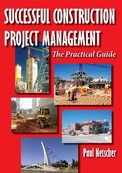
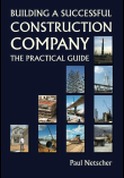
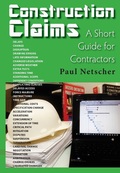
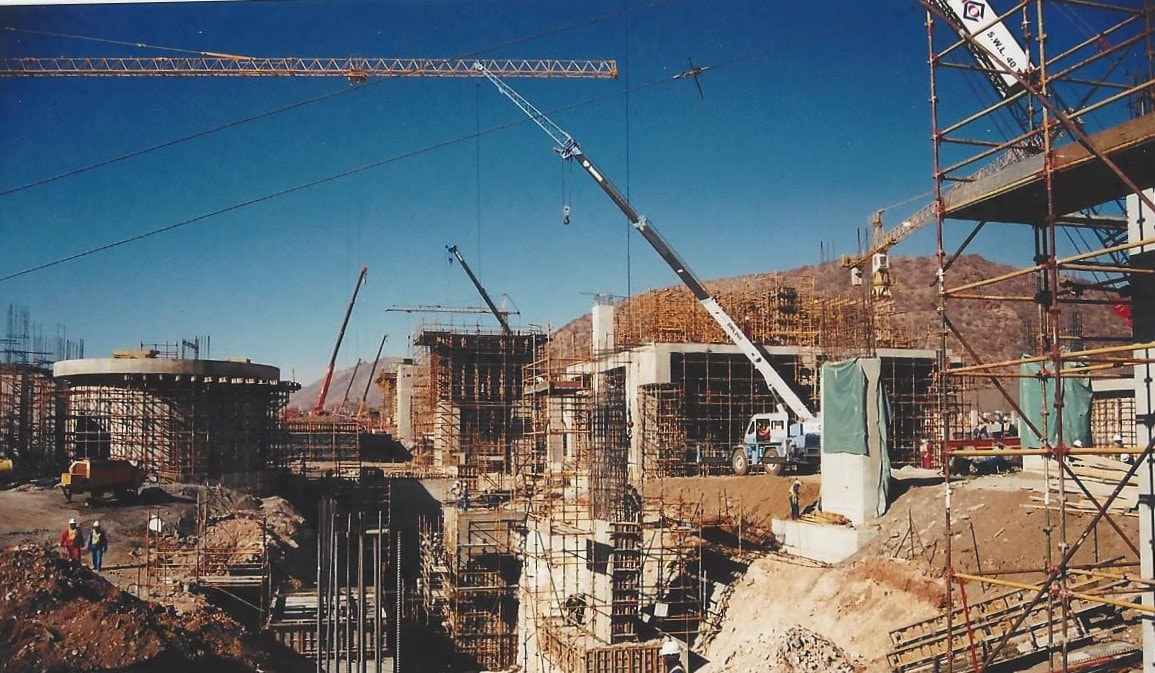
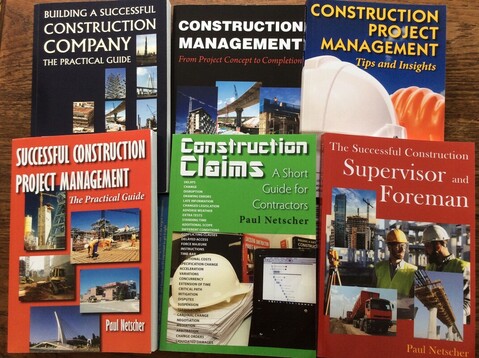
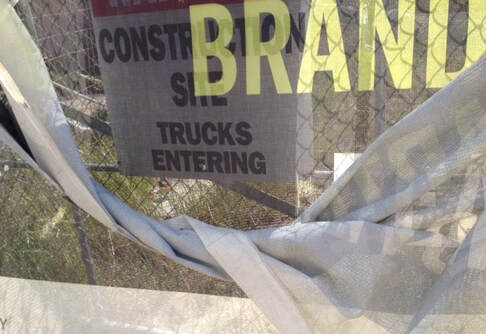

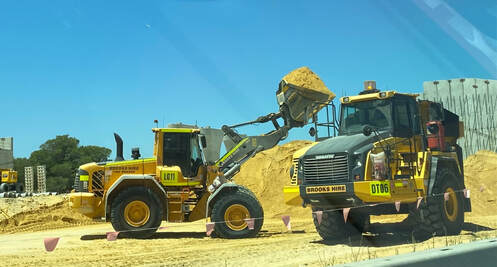

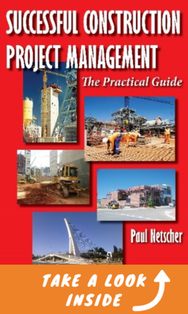
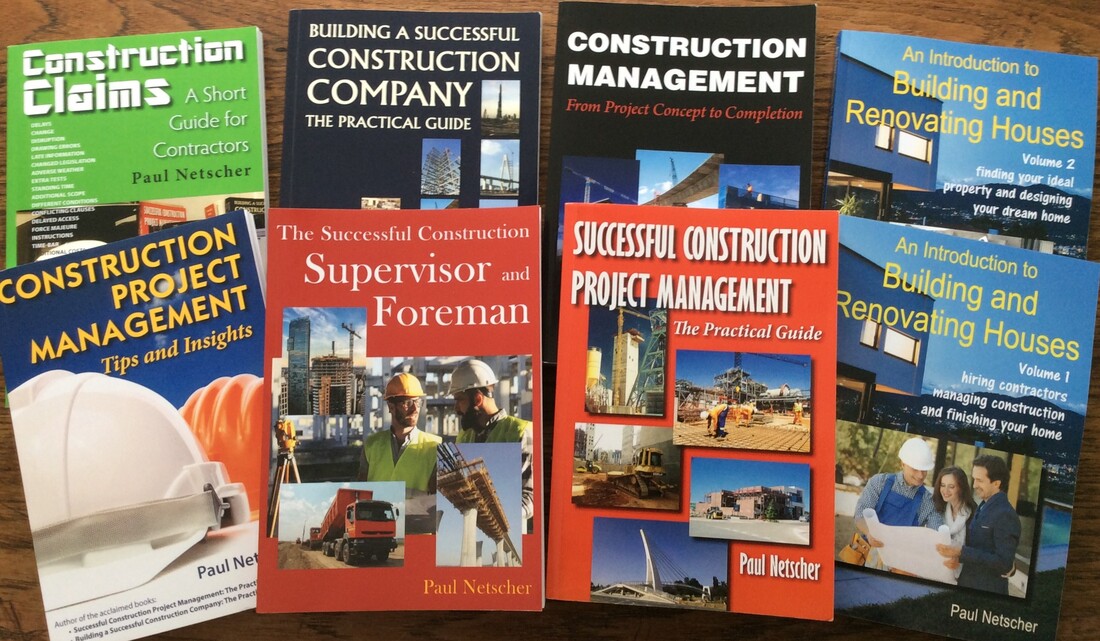
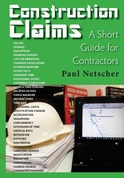
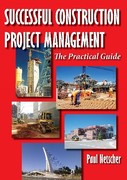




 RSS Feed
RSS Feed




